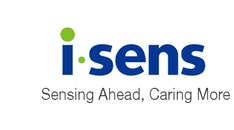
CAUSES and SYMPTOMS of type 2 diabetes
While type 2 diabetes is greatly affected by obesity, it is not the sole underlying cause of diabetes. Causes and risk factors for type 2 diabetes include:
-
Genetics – Studies have shown that a person’s future risk of developing type 2 diabetes has a significant heritable factor associated with specific genetic features like age and race (NIDDK, 2016).
-
Obesity – Being obese with a body mass index (BMI) of 30 or more can affect how your body reacts to insulin and can even lead to the development of insulin resistance or prediabetes (NIDDK).
-
Metabolic syndrome (insulin resistance) – People with insulin resistance often experience other groups of conditions including high blood sugar, high blood pressure, high cholesterol, and triglycerides (American Heart Association)
-
Excess glucose from your liver – Your blood sugar levels may rise from your liver not effectively controlling how much glucose it produces by producing excess glucose (Diabetes UK)
-
Prediabetes – Those with prediabetes are at higher risk of developing type 2 diabetes.
-
Polycystic Ovary Syndrome– those with PCOS are at higher risk of developing type 2 diabetes due to symptoms such as prediabetes and insulin resistance (CDC, 2020).
- Gestational Diabetes – Those with gestational diabetes or have had gestational diabetes during pregnancy are at a higher risk of developing type 2 diabetes (CDC, 2019).
Type 2 diabetes symptoms may include:
- Urinating often
- Feeling very thirsty
- Feeling very hungry—even though you are eating
- Extreme fatigue
- Blurry vision
- Cuts/bruises that are slow to heal
- Weight loss—even though you are eating more (type 1)
- Tingling, pain, or numbness in the hands/feet (type 2)
|
References: |
(Disclaimer)
The content of this article is intended to provide a general information and knowledge on the subject matter. The views expressed in newsletters, articles, and blogs in the i-SENS USA website are not necessarily those of i-SENS Incorporated, i-SENS USA Incorporated or our publishers. Medical or nutritional information on i-SENS USA website is not intended to replace professional medical advice – you should always consult a specialist with any questions about your specific circumstances.





Add a comment